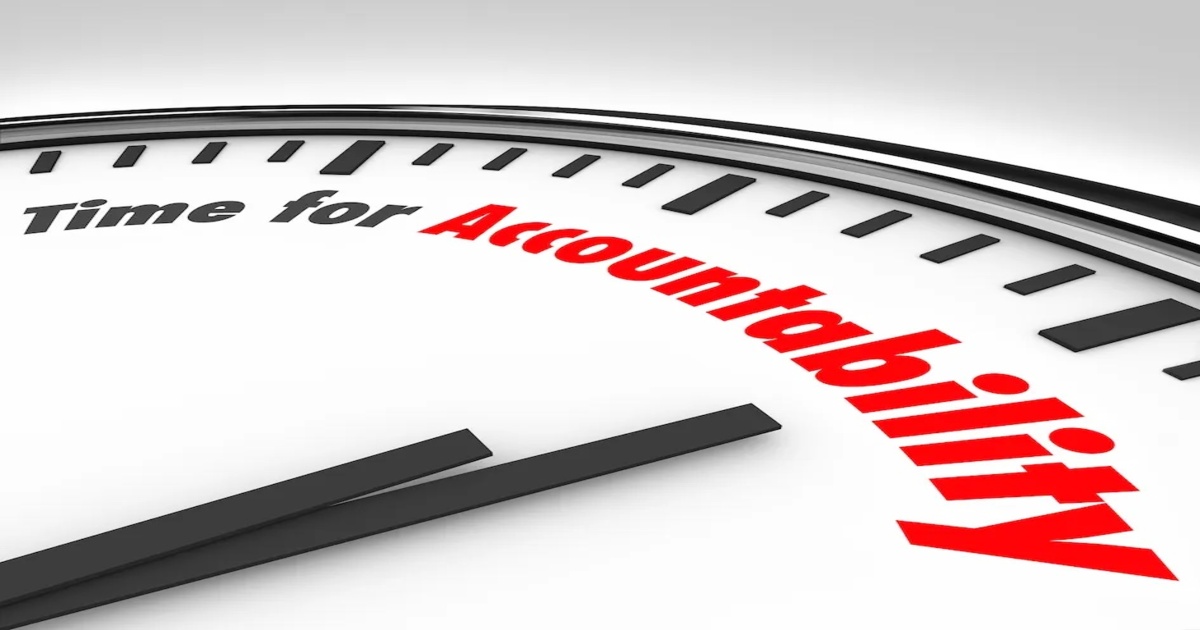Introduction
Public policies play a crucial role in shaping the socio-political landscape of a nation. They serve as guidelines and frameworks that steer decision-making processes, promote social welfare, and address the diverse needs of a society. For quite sometime now, Nigeria has suffered from a series of inconsistent policies, and this continues to pose a number of threats to the country’s development, economically and socio politically. Its time to put things right!
In this comprehensive insight, we will delve into the intricacies of creating viable public policies, and explore the various facets that contribute to effective governance. From understanding the fundamentals to analyzing real-world case studies, this insight aims to equip policymakers, researchers, and citizens alike with the knowledge necessary to foster positive change through well-crafted policies.
The Importance of Public Policies
Public policies serve as the foundation for effective governance and provide a roadmap for achieving societal goals. They enable governments to address pressing issues, allocate resources efficiently, and enhance the well-being of citizens. From economic policies that promote growth and stability to social policies that ensure inclusivity and justice, the impact of well-designed public policies cannot be overstated.
Defining Viable Public Policies
Viable public policies are those that are not only well-conceived but also practical, adaptable, and sustainable. They consider the unique characteristics and needs of the target population while aligning with the broader goals of governance. To be deemed viable, a policy must undergo rigorous analysis, stakeholder engagement, and continuous evaluation to ensure its relevance and effectiveness.
The Policy Creation Process
The process of creating viable public policies involves multiple stages, each requiring careful consideration and collaboration. Here is a step-by-step overview of the policy creation process:
Identifying the Issue: The first step is to identify the problem or issue that the policy aims to address. This involves conducting thorough research, collecting data, and analyzing trends to gain a comprehensive understanding of the issue at hand.
Setting Policy Objectives: Once the issue is identified, policymakers need to establish clear and measurable objectives that the policy seeks to achieve. These objectives should align with the overall vision of the government and be specific enough to guide the subsequent policy development stages.
Formulating Policy Options: Policymakers need to explore various policy options and alternatives that could effectively tackle the identified issue. This stage involves brainstorming, research, and consultation with subject-matter experts to develop a range of potential strategies.
Assessing Policy Alternatives: The identified policy options must be thoroughly evaluated to determine their feasibility, potential impact, and alignment with the government’s priorities. This assessment involves analyzing the economic, social, and environmental implications of each alternative.
Policy Selection and Design: Based on the assessment, policymakers select the most viable policy alternative and proceed with its detailed design. This includes specifying the policy scope, defining key provisions, and considering the potential challenges and unintended consequences.
Consultation and Feedback: It is crucial to engage stakeholders and solicit their input throughout the policy creation process. By involving experts, communities, and individuals affected by the policy, policymakers can gather valuable insights and refine the policy design accordingly.
Policy Implementation Planning: Before rolling out the policy, a comprehensive implementation plan must be developed. This plan outlines the necessary steps, timelines, resource allocation, and coordination mechanisms required for effective execution.
Policy Implementation: The policy is officially implemented, and the necessary actions are taken to put it into practice. This stage involves monitoring and adjusting the implementation process as required, ensuring smooth execution and timely delivery of desired outcomes.
To be deemed viable, a policy must undergo rigorous analysis, stakeholder engagement, and continuous evaluation to ensure its relevance and effectiveness.
Analyzing Policy Impact
Policy impact analysis is a crucial component of the policy creation process. It helps policymakers understand the potential consequences and outcomes of a policy before its implementation. By conducting impact assessments, policymakers can anticipate and mitigate any adverse effects, maximize positive outcomes, and optimize resource allocation.
Best Practices for Policy Implementation
Effective policy implementation requires a strategic and systematic approach. Here are some best practices that can enhance the chances of successful policy implementation:
Clear Communication: Ensure that the policy objectives, guidelines, and expectations are clearly communicated to all stakeholders. Transparent communication fosters understanding, cooperation, and alignment among various actors involved.
Capacity Building: Invest in capacity building programmes to equip government officials, agencies, and other implementing bodies with the necessary skills and knowledge to execute the policy effectively.
Monitoring and Evaluation: Establish robust monitoring and evaluation mechanisms to track the progress, measure outcomes, and identify areas for improvement. Regular assessments help in identifying bottlenecks and adjusting implementation strategies accordingly.
Flexibility and Adaptability: Policies should be designed with built-in flexibility to adapt to changing circumstances and emerging challenges. This ensures that the policy remains relevant and effective over time.
The Role of Stakeholders
Stakeholders, including citizens, civil society organizations, businesses, and experts, play a vital role in the policy creation process. Their diverse perspectives, knowledge, and experiences contribute to more comprehensive policy designs. By engaging stakeholders from the early stages, policymakers can foster inclusivity, accountability, and transparency.
Ensuring Policy Compliance
Policy compliance is crucial for the successful implementation and enforcement of public policies. Governments need to establish mechanisms to ensure that individuals, organizations, and institutions adhere to the policy guidelines. This may involve creating regulatory frameworks, monitoring systems, and enforcement agencies to oversee compliance.
Evaluating Policy Effectiveness
Evaluating policy effectiveness is essential to determine whether the intended outcomes have been achieved and to identify areas for improvement. By analyzing the policy’s impact on the target population and assessing its alignment with the original objectives, policymakers can make data-driven decisions and refine policies accordingly.
Addressing Policy Challenges
The process of creating viable public policies is not without challenges. Policymakers often face hurdles such as conflicting interests, resource constraints, political dynamics, and public resistance. By proactively identifying and addressing these challenges, policymakers can navigate complexities and increase the chances of policy success.
Embracing innovation, evidence-based decision-making, and inclusive approaches will be critical to creating viable public policies that effectively respond to the needs and aspirations of current/future generations.
Case Studies: Successful Policy Initiatives
Case Study 1: Universal Healthcare Implementation in Country X: In response to rising healthcare costs and inadequate coverage, Country X implemented a universal healthcare policy. By leveraging tax revenues, the government ensured that every citizen had access to essential healthcare services, resulting in improved health outcomes and reduced financial burdens.
Case Study 2: Renewable Energy Transition in Country Y: Country Y embarked on a comprehensive policy initiative to transition to renewable energy sources. Through a combination of incentives, regulations, and investment in infrastructure, the country successfully reduced its reliance on fossil fuels, lowered greenhouse gas emissions, and stimulated the growth of the renewable energy sector.
Case Study 3: Education Reform in Country Z: Country Z recognized the need to revamp its education system to meet the demands of a rapidly changing global economy. The government implemented policy reforms that focused on improving access to quality education, enhancing teacher training programs, and integrating technology into classrooms. As a result, student performance and graduation rates significantly improved, preparing the younger generation for future success.
These case studies highlight the positive impact of well-designed and implemented public policies in addressing complex societal challenges and achieving transformative outcomes.
The Future of Public Policy
As the world continues to evolve, the field of public policy must adapt to new realities and emerging issues. Technological advancements, demographic shifts, climate change, and geopolitical dynamics present both opportunities and challenges for policymakers. Embracing innovation, evidence-based decision-making, and inclusive approaches will be critical to creating viable public policies that effectively respond to the needs and aspirations of future generations.
Creating Viable Public Policies: FAQs
FAQ 1: What are the key elements of a viable public policy?
A viable public policy should have clear objectives, consider the needs of the target population, be backed by solid research and data, involve stakeholder engagement, and allow for continuous evaluation and adaptation.
FAQ 2: How can policymakers ensure policy compliance?
To ensure policy compliance, policymakers can establish regulatory frameworks, monitoring systems, and enforcement mechanisms. Transparent communication and public awareness campaigns also play a crucial role in promoting compliance.
FAQ 3: What are the challenges policymakers face in creating viable public policies?
Policymakers often face challenges such as conflicting interests, limited resources, political dynamics, and resistance from various stakeholders. Balancing competing priorities and addressing these challenges requires careful navigation and strategic decision-making.
FAQ 4: How can policy effectiveness be evaluated?
Policy effectiveness can be evaluated through various methods, including data analysis, impact assessments, stakeholder feedback, and monitoring of key performance indicators. Regular evaluations provide insights into the policy’s outcomes and enable policymakers to make informed adjustments.
FAQ 5: What role do stakeholders play in the policy creation process?
Stakeholders provide valuable perspectives, expertise, and feedback during the policy creation process. Their involvement fosters inclusivity, accountability, and transparency, leading to more comprehensive and effective policy designs.
FAQ 6: How can policymakers anticipate and address policy challenges?
Policymakers can anticipate and address policy challenges by conducting thorough research, engaging with stakeholders, seeking expert advice, and proactively identifying potential barriers. Flexibility, adaptability, and a willingness to iterate on policies are essential in navigating challenges successfully.
Conclusion
Creating viable public policies is an intricate process that requires careful planning, stakeholder engagement, and continuous evaluation. By following best practices, analyzing policy impact, and learning from successful case studies, policymakers can increase the chances of crafting policies that foster positive change. The future of effective governance lies in the hands of policymakers who are dedicated to addressing societal challenges and shaping a better tomorrow through well-crafted and implemented public policies.
Need Help?
At Carthena Advisory, we provide well-crafted strategy development services that will give your organization a competitive advantage, increase productivity, and drive growth and profitability. Visit our strategy development and implementation monitoring capability for more information.








